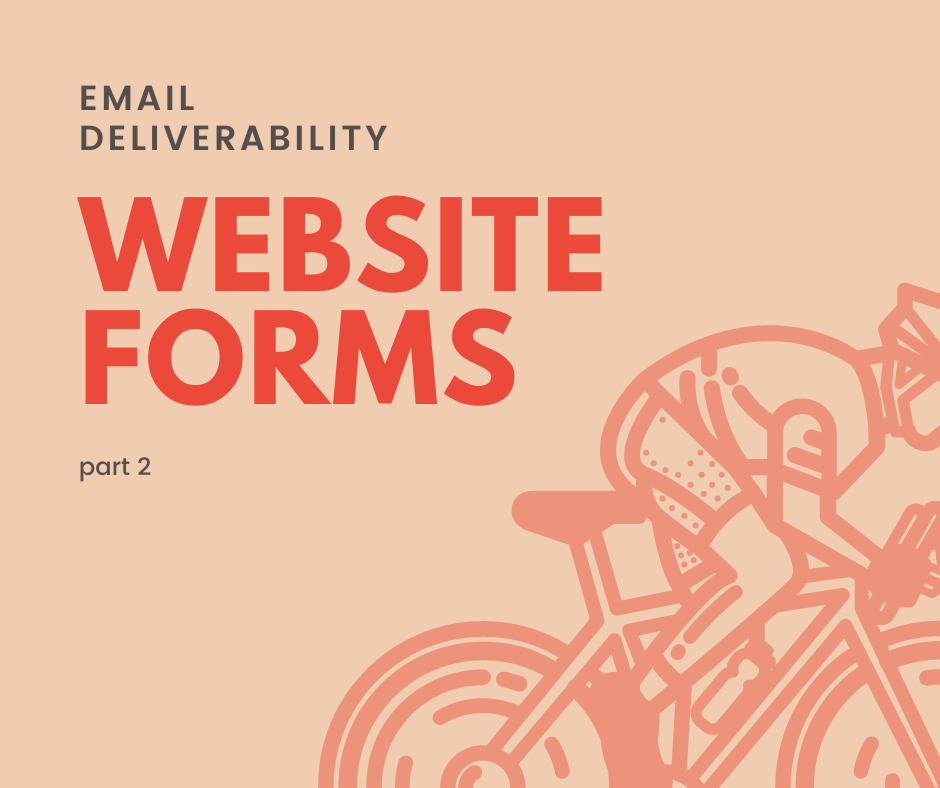Website forms & Email deliverability

Email forms are an essential aspect of any WordPress website. They enable our website visitors to make contact with us thereby fulfilling one of the fundamental reasons for having a website in the first place – helping convert anonymous website visitors into leads and prospects who we can talk to.
In our first article on email deliverability, we discussed the basics of configuring your business email so as to minimise the likelihood of your everyday emails going into the dreaded abyss of spam folders. In this article, we are going to focus on websites and the email forms they use.
Email forms – the basics
WordPress comes with my plugins for email forms; we tend to use Ninja Forms.
With Ninja Forms, you can easily create a new form consisting of the fields you want, and have that form appear on a page of your choice.
A quick test of your new form may seem to show that you are receiving emails when the form is submitted, which may lull you into thinking that everything is fine and there is nothing more to do.
The problem is brought to a head when something goes awry…
Dealing with form deliverability issues
If we are ever asked to investigate an issue with a website form, it’ll typically be along the lines of “we don’t think the form is working” or “they said they didn’t receive the email” or something similar. In short, there is a deliverability issue.
One of the very first things we’ll do is to check what logging or records we have to help our investigation. These normally fall into two areas:
- Copies of emails saved on the website itself
- SMTP logs on the webserver
Some email forms can be configured to save copies of form submissions. GDPR/privacy considerations aside, this can be a very handy backup for website owners to review their email form messages. It also helps us troubleshoot.
SMTP logs are even more useful. These allow us to see whether the website was able to send the email in the first place. And, if not, why the email was rejected.
However, many website hosts simply do not provide access to these SMTP logs – so we need to take some extra website configuration steps.
Third-Party SMTP services
By default, forms on your website will send emails via the services of the website hosting company. However, as we’ve seen above, these services can be limited, so it’s best practice to use alternatives.
Our choice of third party services is usually Mail Gun. Others such as Send Grid, Postmark, Mailchimp, SES, SendinBlue are also very good (SES is particularly useful if your email volume is high – it’s more complicated to set up but cheaper to use).
With Mail Gun we get:
- SMTP logs
This gives us a record on the status of every email the website sends (whether successful or not): an essential paper trail when trying to troubleshoot issues. - Enhanced Deliverability
We talked about how important DKIM and SPF are in the previous article – how such DNS changes can drastically improve your email deliverability. With Mail Gun, these records can equally be used to ensure that your website is also perceived as a valid source for sending emails on your domain name.
More importantly, services like Mail Gun, have better email deliverability rates than (say) a generic website host because Mail Gun etc are more trusted & reputable sources for sending emails in the first place. This aspect alone is reason enough to use such as service.
Most websites don’t send that many emails, if you send a lot, then you may need a higher plan with services such as Mail Gun. A benefit of higher plans is that you will get a longer history of your SMTP logs. E.g. by default the pay-as-you-go model on Mail Gun gives 5 days of logs (which is typically enough).
In a future article or video, I’ll take you through the step by step guide of setting up and configuring Mail Gun – for now, I simply wanted to introduce the concept.
Testing Tools
I’d like to end with talking about two tools that you may find useful.
With both of these tools you send an email to a special email address and they’ll check you ought for Spam etc. They are easy to use and very useful:
Final Thoughts
Hopefully, you are now more aware of the extra steps you can take to improve the deliverability of emails coming from your website forms.
If you like this article, feel free to subscribe to our email newsletter, and you may like to join in our community on Facebook where we discuss topics like this.
Thanks for reading.
Joel
